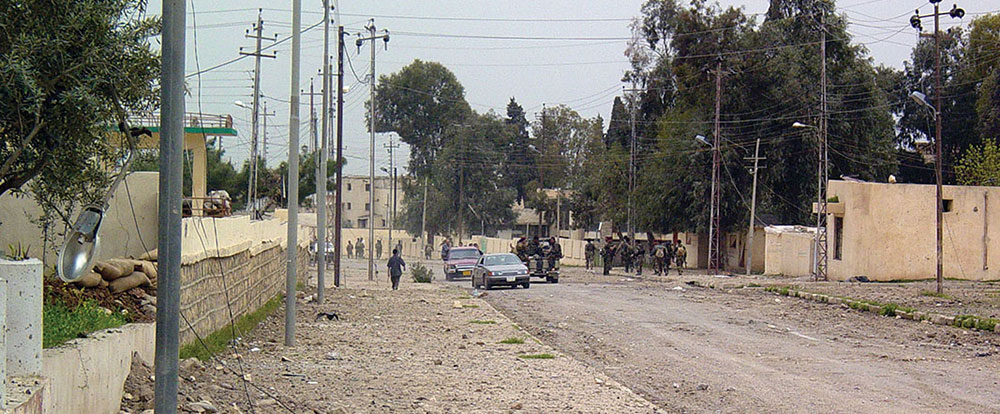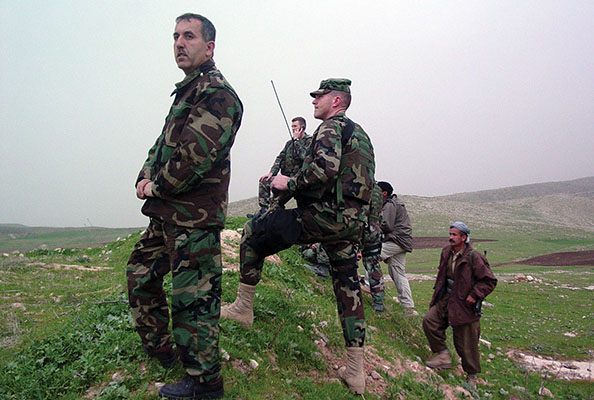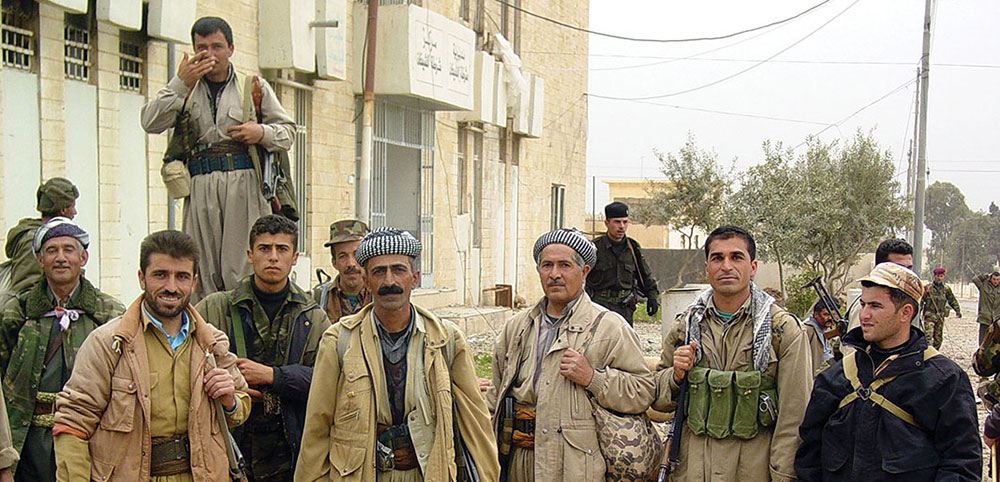DOWNLOAD

The small village of Ayn Sifni occupies a strategic location on the main road north of Mosul, close to the Green Line that indicates the political boundary between greater Iraq and Kurdish territory to the north. In order to confront the Kurdish forces to the north, the Iraqi 108th Regiment, 8th Infantry Division maintained two battalions of occupying troops in the traditionally Kurdish village.2 The liberation of Ayn Sifni by U.S. and Kurdish forces would open the route to Mosul and protect the Kurdish lines of communication.
Since arriving in Bashur on 23 March, Captain (CPT) Gary Caldwell (pseudonym) and his Special Forces (SF) team had linked up with other 10th Special Forces Group (SFG) personnel and Kurdish forces in the vicinity of Ayn Sifni. The well organized Kurdish supays (battalions) occupied positions on the ridgelines north of the village and maintained constant surveillance of the occupying troops. The supays rotated personnel from the ridgelines in thirty-day increments, as they had done for a number of years. From these positions the Kurdish forces could muster two hundred fighters in 30 minutes, and six hundred in 2 hours.3 As events in Iraq unfolded and the strategic value of the village was revealed, 10th SFG commanders and their Kurdish counterparts developed a plan to attack and seize Ayn Sifni.

Two weeks on a steady diet of potato soup, rice, bread, and tea did little to dampen the ardor of the SF Operational Detachments–A (ODAs) working with the Kurdish forces. Originally deployed to the area as hunter–killer teams against Iraqi armor, the American troops easily transitioned to their new mission. In an effort to drive the Iraqis out of Ayn Sifni with minimal engagement, the ODAs initiated an orchestrated bombing campaign against the Iraqi units left in the village.4 Unfortunately, lack of dedicated aircraft hindered the effectiveness of the bombing campaign, and in one instance allowed an entire Iraqi battalion to load up on buses and trucks in broad daylight and pull out of the area unscathed.5 After that, intelligence estimates put the remaining Iraqi force strength in Ayn Sifni at two platoons.6 In order to open the road to Mosul, Ayn Sifni would have to be neutralized.
SF Advanced Operational Base (AOB) 050—comprised of ODAs 051, 055, and 056—focused on the liberation of Ayn Sifni. The AOB established a program of reconnaissance that concentrated on the areas north and west of the village, and provided, with one exception, good observation of the objective. On the southeast side of the village, low ground prevented direct observation by the teams, and they were unable to maneuver to a position to see into the dead space. South of Ayn Sifni, the main road out was under observation all the way to the intersection with the main highway. The groundwork had been laid for an offensive against the village.
On 5 April, word came that the Kurds were advancing along the Green Line and that Ayn Sifni needed to be taken to facilitate the movement on Mosul. The deployment of forces against Ayn Sifni on 6 April required that the SF teams split and link up with the various elements of the supay. ODA 051 commander CPT Michael Dawson colocated his team with the commander of the 12th Supay and three hundred Peshmerga warriors on the east side of the village. Dawson considered the upcoming operation to be the culmination of a mission that began more than a month earlier with a tension-filled land infiltration and a stressful personal security detail.7 After three weeks of intensive training with his Kurdish allies, Dawson was finally in a position to see the fruits of the team’s labor.




